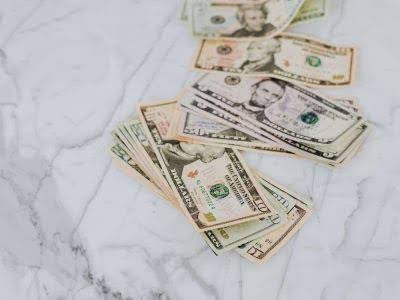Content

Imagine a company that manufactures high-quality exercise equipment. The company incurs both fixed costs and variable costs, and the company has additional capacity to manufacture more goods. Secondly, the law of returns can also explain the marginal cost behavior. The law means that when a variable cost is added to a fixed cost an organization will get to a level where there is a disproportionate amount of the variable cost compared to the fixed cost.

You’ll increase your profits by $15,500—that’s $25,000 in revenue from the extra 100 doors minus the $9,500 cost of producing them. You can apply the marginal cost concept to accounts payable processing in your business. Your business has a variable cost per invoice and payment and certain fixed costs for processing accounts payable and making payments. In combination with marginal cost analysis, businesses use variable and fixed costs for different types of financial analysis, trend monitoring, pricing, and decision-making.
Short run marginal cost
Using this information, a company can decide whether it is worth investing in additional capital assets. The reason for the differences stems from the fact that businesses and their production processes differ. Therefore, unit costs are not the same and depend on the nature of product or service. The explanation under every type of marginal costs highlights the difference. It simply involves getting the changes in total production costs and dividing the cost with the changes in quantity or output.
Marginal costs provide insights into the optimal production output and pricing, i.e. the point where economies of scale are achieved. Consider the warehouse for a manufacturer of landscaping equipment. The warehouse has capacity to store 100 extra-large riding lawnmowers. The margin cost to manufacture the 98th, 99th, or 100th riding lawnmower may not vary too widely. However, manufacturing the 101st lawnmower means the company has exceeded the relevant range of its existing storage capabilities. That 101st lawnmower will require an investment in new storage space, a marginal cost not incurred by any of the other recently manufactured goods.
Why Is the Marginal Cost Equation Important?
If marginal costs are plotted on a graph, the curve would be “U-shaped,” as costs gradually shift downward once production volume increases. Johnson Tires, a public company, consistently manufactures 10,000 units of truck tires each year, incurring production costs of $5 million. Marginal cost is also essential in knowing when it is no longer profitable to manufacture additional goods.
It is often seen that education is a positive for any whole society, as well as a positive for those directly involved in the market. As stated earlier the intersection of MC and ATC reflect the lowest point of production, play animation. Finance teams can run into trouble when forecasting marginal cost into the future. As your organization Bookkeeping & Accounting for Lawyers changes, your marginal cost formula may have to change with it. Updating that formula over time based on the completion or implementation of capital projects and initiatives can be a daunting task in a spreadsheet-based financial model. In addition to marginal cost pricing, it’s vital you create a competitive cash flow analysis.
Marginal Cost Calculation Example
In the initial stages of production, the curve dips, demonstrating economies of scale, as marginal cost falls with increased output. However, after reaching a minimum point, the curve starts to rise, reflecting diseconomies of scale. Marginal cost’s relationship with the production level is intriguing and has significant implications for businesses. As mentioned, the marginal cost might decrease with increased production, thanks to economies of scale. On the other hand, variable costs fluctuate directly with the level of production. As production increases, these costs rise; as production decreases, so do variable costs.
- The point of transition, between where MC is pulling ATC down and where it is pulling it up, must occur at the minimum point of the ATC curve.
- When she’s not writing, Barbara likes to research public companies and play Pickleball, Texas Hold ‘em poker, bridge, and Mah Jongg.
- During the manufacturing process, a company may become more or less efficient as additional units are produced.
- In their next production run, they produce 20 units at the cost of $3,000.
- Marginal revenue is the revenue or income to be gained from producing additional units.
- Marginal revenue is the additional revenue a firm receives from selling one more product unit.
If, however, the price tag is less than the marginal cost, losses will be incurred and therefore additional production should not be pursued – or perhaps prices should be increased. This https://accounting-services.net/can-a-virtual-assistant-do-your-bookkeeping/ is an important piece of analysis to consider for business operations. If you make 500 hats per month, then each hat incurs $2 of fixed costs ($1,000 total fixed costs / 500 hats).
What Is Marginal Cost?
Fixed costs do not change with an increase or decrease in production levels, so the same value can be spread out over more units of output with increased production. Variable costs refer to costs that change with varying levels of output. Therefore, variable costs will increase when more units are produced. The following table gives a snapshot of how marginal cost varies with the change in quantity produced.
How do you find marginal cost from variable cost?
Marginal cost (MC) is calculated by taking the change in total cost between two levels of output and dividing by the change in output. The marginal cost curve is upward-sloping. Average variable cost obtained when variable cost is divided by quantity of output.
The manufacturer will want to analyze the cost of another multiunit run to determine the marginal cost. The average cost of producing a watch in the first run is $100, but the marginal cost is the additional cost to produce one more unit. Using the marginal cost formula, we can determine how an additional production run will impact profitability. However, since fixed costs don’t change with production levels, the change in total cost is often driven by the change in variable costs.
